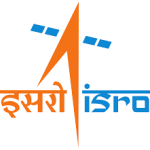The Month of August and Indian Freedom Struggle
The month of August is very dear to all Indians because of the two milestone events happened in the month in relation to the long struggle of the country for independence: Quit India movement and Indian Independence. Quit India movement was launched on August 8, 1942 and on August 15, 1947 the country became independent.
East India Company and Company Rule (1757-1858)
East India Company was a trading firm incorporated on December 31, 1600 in Britain by a group of merchants. The company was given exclusive privileges for trade with East Indies. The invasion of India by the British happened by the arrival of East India company in India in 1608. Over a period of time, it transformed itself from a business entity to a ruling enterprise. In the battle of Plassey in 1757, the military unit of the company defeated the Nawab of Begal, thus initiating the company rule (company raj) in India. The company raj prospered in the subcontinent of India by earning the right for revenue collection in Bengal and Bihar in 1765. Later on, in 1773, the company established capital in Calcutta and appointed its first Governor General. By this time a major part of the subcontinent was under the company rule.
British Raj (1858- 1947)
The period known as British Raj began in India in 1858 when the rule of the subcontinent was transferred to Queen Victoria of Britain. The change of rule happened as a result of the first freedom struggle. The system British Governance ended in August 1947 with the subcontinent gaining freedom and becoming two independent nations, India and Pakistan.
Indian Freedom Struggle: Brief History
Indian Freedom struggle spans a long period of 190 years between 1757 and 1947. The first organized movement happened in 1857 when a group of Indian soldiers revolted against the rule of British. The Indian rebellion started in May 1857 and ended by December 1858. This was India’s first war for independence and is recorded in history as Indian Mutiny or the Sepoy Mutiny. Though freedom could not be achieved, the war succeeded in injecting the idea of gaining independence from British in to the minds of Indian population. The British was forced to take back the ruling power from East India company and began to rule the subcontinent directly. The active phase of Indian independence struggle thus began in 1857.
The Indian National Congress (INC), which played a pivotal role in the freedom struggle, was born in 1885. Lala Lajpat Rai, Ram Manohar Lohia, Rani Lakhshmi Bhai, Maulana Abdul Kalam Azad, Mahatma Gandhi, Motila Nehru, Dadabhai Naoroji, Bal Gangdhar Tilak, Subhash Chandra Bose, Sardar Vallabh Bhai Patel, Jawaharlal Nehru and Subhash Chandra Bose were some of the prominent leaders of freedom struggle. During the struggle, leaders and freedom fighters made lot of sacrifices, some of them even sacrificed their lives for the freedom of the country. Finally, Indians under the leadership of Mahatma Gandhi and through non-violence succeeded in earning freedom. The long period of freedom struggle witnessed many events like Jallianwala Bagh massacre, Chauri Chaura incident, Bardoli Satyagraha, Purna Swaraj resolution, Salt Satyagraha and Quit India Movement which are recorded in the inspiring history of India.
August 12,1942 : Launch of Quit India Movement
Quit India movement (August Kranti) is a major milestone in the history of the freedom struggle. It was announced on August 8,1942 by Mahtama Gandhi at the Bombay session of the All India Congress Committee. In his speech he gave the call for “ do or die”. Thus the mass protest for an orderly British withdrawal was launched. Though Britain was in the middle of second world war, faced the protesters by arresting all major leaders of Congress within hours of the speech. Thousands of freedom fighters were arrested and many lost their lives during police firings. Though the British succeeded in containing the uprising, they realized that they could not continue in India in the long run.
August 15, 1947: India Becomes Free
Independence Movement, based on nonviolent resistance and civil disobedience, led by the Indian National Congress and Mahatma Gandhi compelled the British to hand over the rule to Indians and withdraw from India. The British Parliament passed the Indian Independence Act 1947 transferring legislative sovereignty to the Indian Constituent Assembly and India became independent on August 15, 1947, thereby coming out of the clutches of the British Raj. .
Today, India is the largest democratic republic in the world with around 130 crore population. It is one of the fastest growing economy in the world. Why is Khadi important for Indians?









